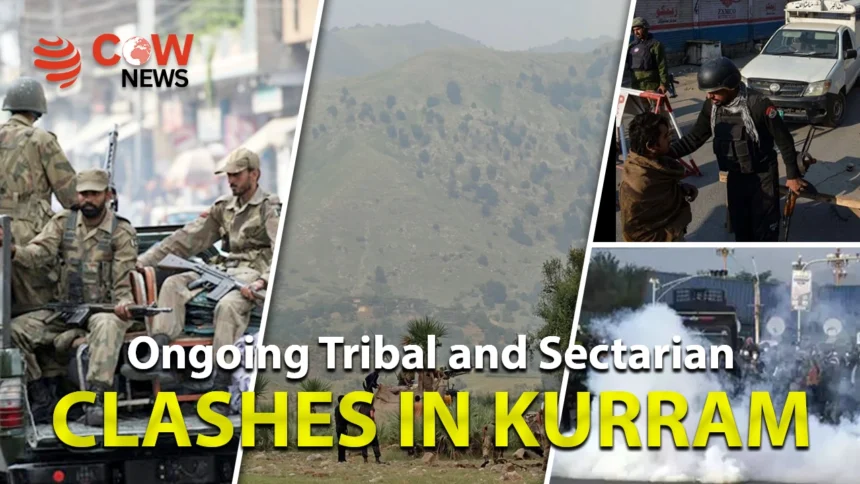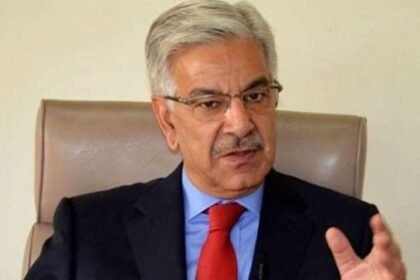BY Sidra Hasssan
The Kurram district is once again making headlines due to a series of terror-related incidents. For over four months, the district has been completely cut off from the rest of Khyber Pakhtunkhwa due to ongoing clashes. These sporadic and intense skirmishes, stemming from land and sectarian disputes, have flared up once again, deeply rooted in history. Hundreds of lives have been lost, and many locals have been injured. The harsh winter conditions have exacerbated the shortage of food, medicine, and other essential supplies, creating a dire humanitarian crisis.
To understand the reasons behind the recurring tribal and sectarian clashes in Kurram, it is essential to take a brief look at the region’s historical context. Kurram is one of Pakistan’s oldest tribal areas, officially settled during the British colonial era in the 1890s, marking the beginning of land distribution. These lands, over which there were disputes during that time, have today become the focal point of conflict, with ownership disagreements leading to periodic violence that claims numerous lives.
The Root Causes of the Dispute
The core issue that underpins these conflicts is the absence of an official land record in most parts of Kurram. Without proper documentation, various tribes and individuals lay claim to different portions of land. At least five significant sites of land disputes exist in the region, including sectarian divides. Both Shia and Sunni groups lay claim to the same pieces of land, making them a central cause of the frequent confrontations.
There are three major contributing factors to the Kurram dispute: its geographical importance, external international interference, and local land conflicts. Geographically, Kurram has been recognized for its strategic value. The American military once referred to it as the “Parrot’s Beak” due to its pivotal location. Kurram sits on Pakistan’s northwestern border and is primarily divided into three sections: Upper Kurram, Central Kurram, and Lower Kurram. The district covers an area of 3,380 square kilometers, and according to the 2023 census, its population stands at 785,434.
The region is home to four main tribes: Turi, Bangash, Mangal, and Maqbool. Upper Kurram, in particular, is predominantly Shia, with the Shia population accounting for 43%, while Sunnis make up 57% of the population in Central and Lower Kurram. The region’s most strategically significant area, Parachinar, lies in Upper Kurram, and it shares a border with Afghanistan. During the 1980s, under General Zia-ul-Haq’s regime, the Afghan Jihad movement used this area as a strategic base.
The Recent Conflict and its Escalation
The current conflict in Kurram involves disputes over land between two tribes at five different locations. These sites include Pewar (Shia), Teri Mangal (Sunni), Boshera (Sunni), Malhiel (Shia), Maqbal (Sunni), Kunj Ali Zai (Shia), Balish Khel (Shia), and Parda Chamkani (Sunni). This is a complex issue that spans several decades. In 2018, when Kurram Agency became part of Khyber Pakhtunkhwa, the government formed a Land Commission in 2021 to resolve the land disputes. However, the commission has been unsuccessful in showing tangible results.
The latest escalation began in 2024 over a dispute involving just 100 kanal of land between Boshera and Malhiel. This seemingly small issue has caused significant tension across the district. In November 2024, a convoy consisting of women, children, and elderly individuals, traveling from Parachinar to Peshawar, was targeted in the Lower Kurram region at the Bangan area. Dozens of people were killed in the attack. Following this, further unrest erupted in the region, with rioters setting homes and markets on fire in Bangan.
Government Response and its Failures
In response to the escalating violence, the provincial government sent a three-member delegation, which met with tribal elders to assure them that the roads in Kurram would be made safe. However, no significant actions were taken on the ground. Subsequently, an Apex Committee meeting was convened, during which it was decided to rid Kurram of heavy weaponry, demolish the bunkers of both sides, and set up checkpoints along the Tilli-Parachinar road. Yet, these measures failed to yield positive results.
A tribal jirga was held between the warring factions, resulting in an agreement to reopen the Tilli-Parachinar road for everyone and for the government to take strict action in case of any future incidents. Unfortunately, this agreement was violated 17 times. On January 1, 2025, an attack occurred on the Deputy Commissioner of Kurram in Bangan, followed by another attack on the convoy, resulting in further fatalities.
Proposed Solutions: Short-term and Long-term
There are both short-term and long-term solutions that can help alleviate the ongoing tensions in Kurram.
Immediate Action Against Heavy Weaponry: The first step is to rid the area of heavy weaponry, as was done in the regions of the Mehsud tribes. This would help reduce the scale of violence and curb the power of the armed groups involved.
Strict Legal Action Against Mischief Makers: There needs to be strict legal action against criminal elements in the region. Social media platforms also need to be monitored, and individuals spreading hate material should be penalized under the Prevention of Electronic Crimes Act (PECA).
Implementation of the Land Settlement Commission: The Land Settlement Commission, established in 2021, should be fully implemented. This would help address the root cause of the land disputes and bring clarity to ownership rights.
Deployment of Competent Officers: The district administration, police, prosecution, judiciary, and security forces must be equipped with the best officers to effectively handle these issues. They should work in coordination to restore peace and order in the region.
Counter-Terrorism Measures: Foreign-trained extremists in the region must be targeted under the Anti-Terrorism Act. Their movements should be restricted, and their bank accounts should be frozen to limit their financial support.
Conclusion
In conclusion, the conflict in Kurram is a multifaceted issue with deep historical, geographical, and sectarian roots. The recent escalation, combined with the region’s strategic importance, has made it a focal point of violence. While the situation remains tense, there is hope that through a combination of immediate action and long-term reforms, peace can be restored in Kurram. The implementation of these proposed measures will provide a pathway toward stability, but it will require sustained effort from both the government and local communities to bring about meaningful change.







